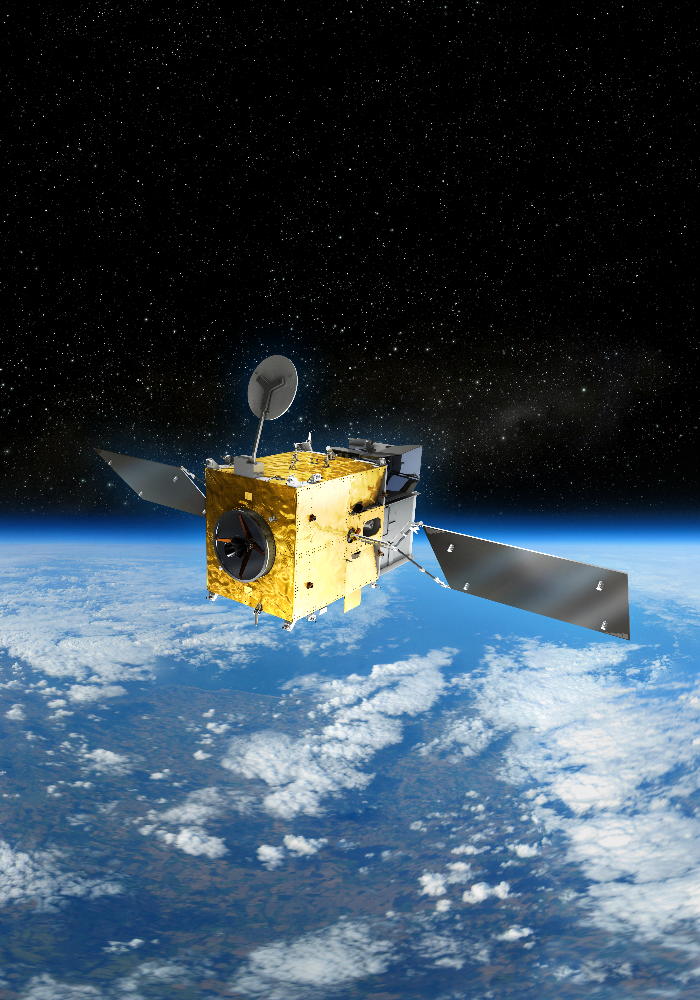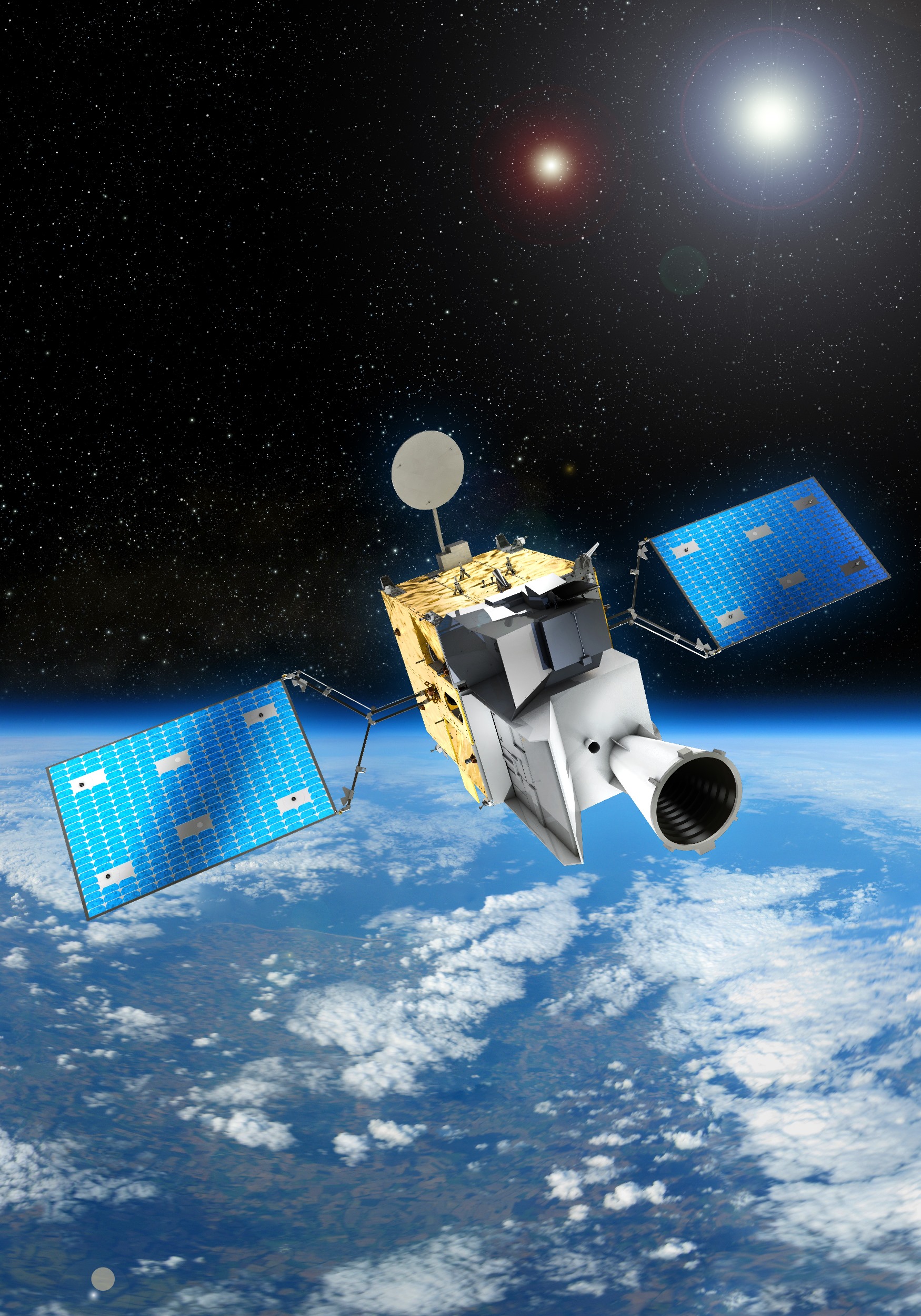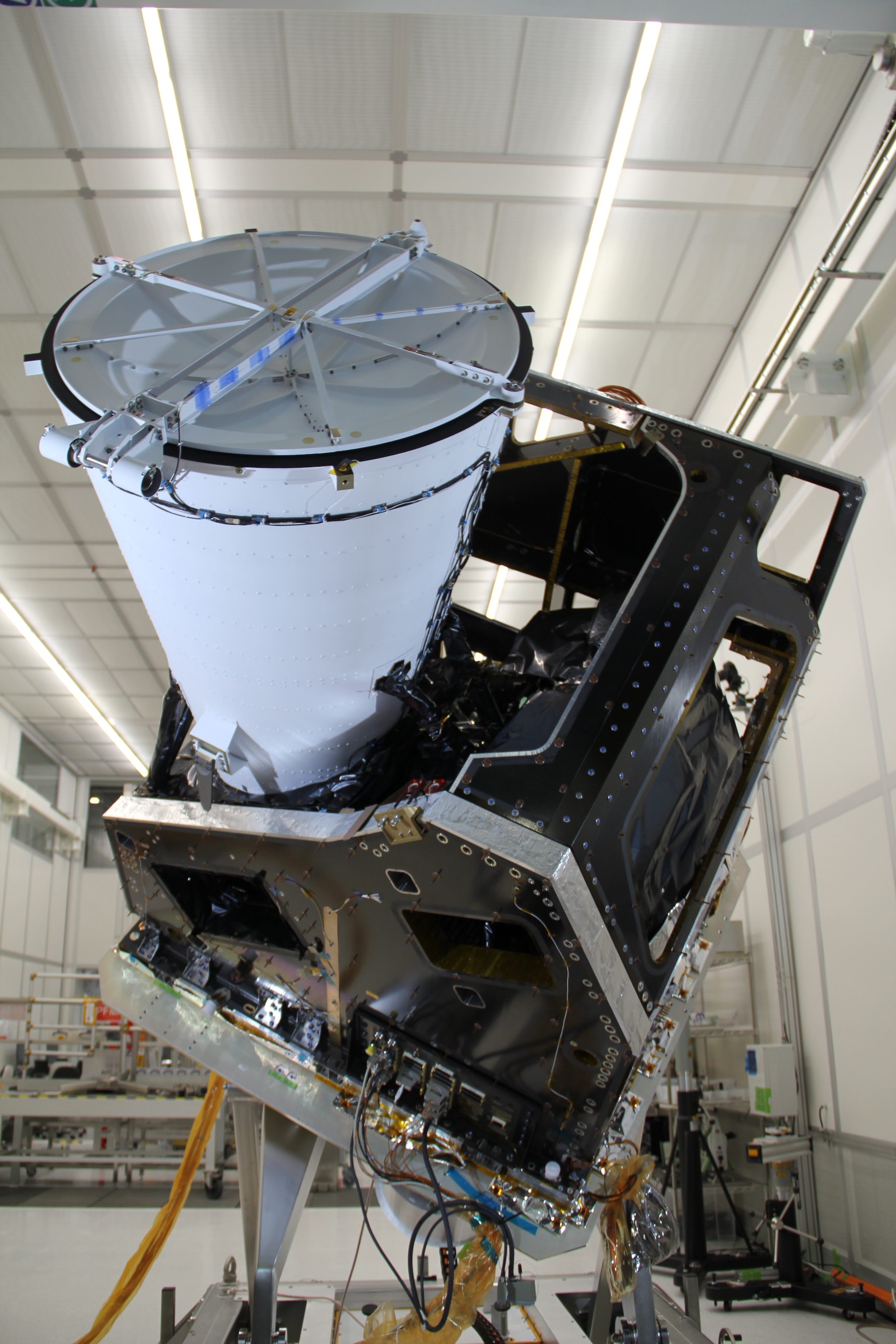Oberpfaffenhofen, November 5, 2019. OHB System AG, a subsidiary of the listed high-tech group OHB SE, has yesterday shipped the flight hardware for the optical payload of the first MTG (Meteosat Third Generation) weather satellite, which is scheduled to launch into space in 2021.
Flight hardware headed for Cannes to Thales Alenia Space facilities
OHB has successfully completed work on the telescope assembly (TA) for the first MTG imager weather satellite. Four MTG satellites will be equipped with an instrument known as a Flexible Combined Imager (FCI). Expressed simply, the telescope assembly for which OHB is responsible is a complex mirror system. Safely housed in an air-conditioned, high-purity transport container, the mirror system left the premises of the OHB Space Center “Optics and Science” in Oberpfaffenhofen near Munich, Bavaria, yesterday.
The telescope assembly is being shipped to Thales Alenia Space in Cannes, France, where further components (such as light-sensitive detectors, electronics and the necessary cooling system) will be installed to form the finished FCI. This will be followed by extensive testing to demonstrate that the instrument is able to withstand the loads during launch and transport into space as well as the extreme conditions in outer space.
Tests have already shown that the accuracy achieved in the mirror arrangement and the quality of the specially manufactured mirrors exceed the target values. This is an essential prerequisite for the overall FCI to achieve the required performance.
The first satellite flight platform was already delivered and is ready for test
Also developed and manufactured by OHB, the satellite platform for this first MTG satellite arrived in Cannes on schedule in April 2019. It was engineered specifically to meet the high requirements of optical GEO satellites for Earth observation and is being used in all six satellites. The FCI is to be integrated into the platform from summer 2020. This first of the six MTG satellites is scheduled to launch in 2021.
How OHB is contributing to MTG
The Meteosat Third Generation (MTG) program, one of the most complex satellite development programs in Europe, is developing and implementing the third generation of European weather satellites for EUMETSAT (Exploitation of Meteorological Satellites).
The six geostationary satellites are configured to provide numerical weather forecasts as well as short-term forecasts. Four MTG imager satellites have been designed for the imaging mission and two MTG sounder satellites for the sounding mission. The MTG program is a joint project between EUMETSAT and the European Space Agency ESA.
“Responsible as it is for all six satellite platforms, two complete infrared sounding (IRS) optical payloads and the four telescope assembly units for the FCI, OHB System AG is playing a key role in the MTG program,” explains Dr. Rüdiger Schönfeld, MTG Program Manager at OHB System AG. The work is being performed under a subcontract with Thales Alenia Space (TAS), the industrial prime contractor for the MTG space segment.
FCI - A German-French instrument
“We have worked very well with our partner Thales Alenia Space on the FCI imaging instrument. We share the goal of engineering and manufacturing the components of this high-precision instrument to optimum effect. I am proud of our team at OHB Space Center “Optics and Science” in Oberpfaffenhofen. They have delivered outstanding work and overcome a number of challenges. Once again, we have been operating at the edge of what is technically feasible,” explains Rüdiger Schönfeld. OHB has been able to amass further expertise in optical systems for use in space via this project. For example, a completely new design has had to be developed for the exact alignment of the mirror system and duly tested for assembly. “Obviously, we will be using these valuable findings to implement the three other telescope assemblies for MTG but will also be incorporating them in the development of other optical payloads,” adds Schönfeld.
The FCI imaging instrument has impressive dimensions: 156 cm x 156 cm x 206 cm. Equally as impressive is the expected accuracy: From an altitude of 36,000 km, the FCI can achieve a resolution of up to 0.5 km - twice that of the current Meteosat satellites. FCI also offers improvements in time and spectral resolution: Data from Europe and Africa will be available every ten minutes on 16 spectral channels. Limited to only Europe and fewer channels, for example, the repetition rate is only two and a half minutes.
What will be improved?
Unfortunately, the MTG satellites will have no influence on our weather. But they will help to increase the reliability of weather forecasts and improve medium- to long-range weather modeling. This will be made possible by the high-resolution observation and geophysical parameters of the terrestrial system which will be supplied by MTG continuously. To do this, the sensors fitted to the satellites will measure the radiation emitted and reflected by the Earth and scan the water vapor in the atmosphere.
Program manager Rüdiger Schönfeld expects “a quantum leap in weather forecasting”, as MTG will be more powerful than the current system (Meteosat Second Generation, MSG). The new sounder instrument developed by OHB is making a major contribution in this respect: “Not only can we look forward to improved accuracy and reliability in weather forecasting, with MTG we can also extend the forecast period. With this third generation of satellites, data can be generated in a far higher quality. In addition, the sounder satellites will make it possible to obtain such data from a geostationary orbit for the first time.”
The improved imager mission and the introduction of the new sounder mission as well as a lightning mission will further improve existing services, including search and rescue services. Specifically, this means that in addition to numerical weather forecasting, weather monitoring and nowcasting will also benefit thanks to the higher-resolution images expected to be produced by the six MTG satellites. The data will also be provided in shorter intervals, making it easier to identify thunderclouds and small-scale fog areas. MTG will also provide new insights for climatological and oceanographic applications as well as air quality monitoring.
Development of the MTG satellite fleet
Assembly of the five other MTG satellites is in full swing in various clean rooms at OHB in Bremen and Oberpfaffenhofen. In Bremen, the first sounder platform has advanced so far that testing is progressing well and will be completed next year. Then the first sounder platform will be ready for its “marriage” to the first sounder instrument. After an extensive testing campaign, the first sounder satellite will then journey from Bremen into space via Kourou in 2023. Three of the four other platforms are currently in various stages of production.
With respect to the instruments, the second flight model for the imager instrument will first be completed in Oberpfaffenhofen before the entire sounder payload, for which OHB is responsible, is implemented.
Further details on the MTG program can be found in our MTG brochure.
Contact for media representatives:
Marianne Radel
Head of Corporate Communications
Phone: +49 421 2020 9159
Email: marianne.radel@ohb.de
Contact for investors and analysts:
Marcel Dietz
Investor Relations
Phone: +49 421 2020 6426
Email: ir@ohb.de



